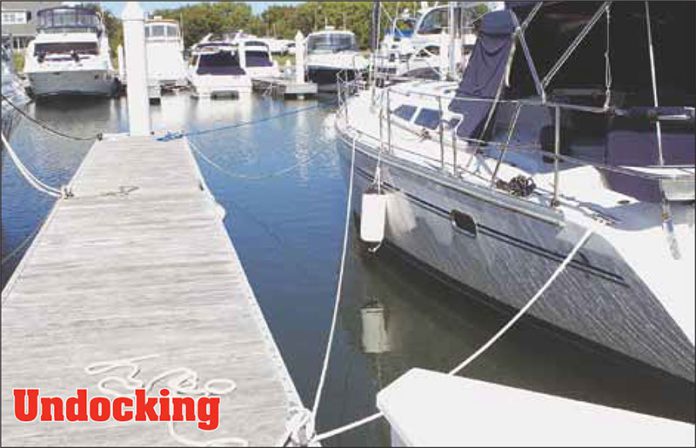Larry’s Outdoor Tips & Tricks
With a new boat comes the learning curve on how to undock and dock your boat for the first time; everything is a little different than your last boat, or if this is your first boat it can be a challenge.
A great idea is to implement an undocking plan with the help of your passengers. You should consider the traffic in the area, the direction of wind and current and the depth of the water. Don’t assume that your passengers have the same experience that you have. And if you ask for their help it only protects their safety as well as yours.
If the wind or current is pushing your boat away from the dock the procedure is simple. Just cast off your lines and pull in fenders as the wind blows you away; when clear and safely away from the dock and other boats, shift to forward and depart at idle speed.
If the wind or current is pushing your boat toward the dock you will have to do some extra planning. Cast off all lines except an after bow spring line. This line will keep you from moving forward and allow the stern to pivot away from the dock. You may want to use a fender forward to cushion the bow of the boat against the dock. Turn the motor to the direction necessary to push the stern away from the dock. Shift into forward at idle speed, very slowly as the stern will swing away from the dock. When it is clear of all obstacles and traffic, cast off the spring line and back away from the dock. When you are safely away, shift to forward and idle away from the dock.
Docking
Ask for help; it might not seem macho, but it can sure help in the learning curve, and whenever possible practice, practice, practice docking, and if you have a buddy ask if you can dock his boat to get a feel of what needs to be done. Practice docking at a deserted pier, much as you practiced driving a car in an empty parking lot. Nothing makes you more confident than repetitive practice.
Learning how to dock a boat using fenders that are placed with precision is a must. There’s more to this than merely hanging the fenders over the side; they should be spaced evenly on the side of your boat. Three is better than two, as you need to judge where the boat will kiss a piling, and how to orient the fenders so they don’t get caught under the pier or swing freely above it. Position them properly and you’ll find that even the best boaters in the world can do a better job of damage-free docking, with the pressure-points protected. Also before approaching the dock, one end of the docking lines should be secured onboard, fenders readied and speed reduced.
Never approach the pier any faster than you’re willing to hit it; you never know when a sudden “wind gust” will cause your boat to do the opposite of what you had intended. Always approach solid objects slowly enough that if your docking job turns into a ramming, the results won’t be tragic.
If the wind is onshore (blowing toward the dock), the boat is brought to a position parallel to the dock and about two feet off. The wind will blow the boat in. It can then be secured by bow, stern and spring lines.
If the wind is offshore (blowing away from the dock), you should approach the dock at a 20 to 30 degree angle. A bow line is passed ashore and secured. In boats with an outboard, or inboard/ outboard engine, the engine is turned towards the dock and put in reverse. This will bring the stern into the dock. The boat can then be secured with the stern line.
When it comes to causes of disastrous docking, applying insufficient power comes in a close second to applying too much. You need to counter and overcome momentum, wind, and current. In heavy winds, reduce your windage. Particularly in a small boat, this can have a dramatic effect on how easy or how hard it is to dock. A Bimini top can act like a sail on a powerboat, and throw you out of kilter. Don’t be afraid to abort if the approach doesn’t seem to be going well. Don’t try to force the issue; instead, circle back for another try.
When docking any type of singleengine boat, always turn the wheel before applying power—not during or after. That way, you won’t get a blast of forward or reverse before the blast of port or starboard kicks in, and always apply short bursts of power instead of steady power. This allows you to maneuver without building up a lot of momentum, which can quickly get out of control.
Lastly never kill the engines until all the lines are secure. Many people who don’t know how to dock a boat well make the mistake of shutting down as soon as the boat is in the slip, but you never know if a crew member is going to drop his or her line(s), or when a piling will slip out of reach. Keep the powers on, so you can maneuver as necessary.![]()






